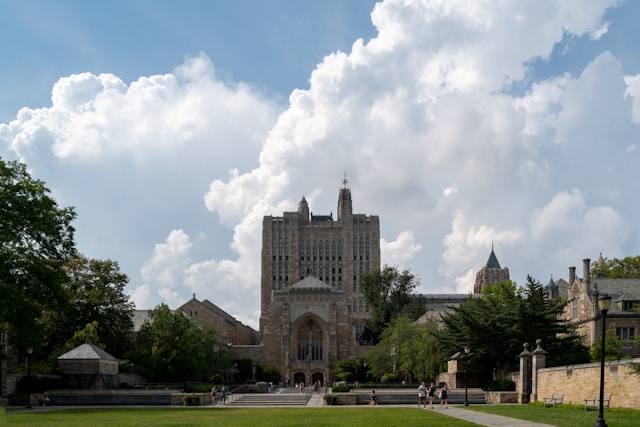A new report from the Equable Institute is raising big questions about Connecticut’s teacher pension system. It looks like the way pension subsidies are handed out might actually be widening the gap between wealthy and struggling school districts.
The findings aren’t subtle. Wealthier communities get an edge, letting them attract and keep more experienced teachers. Poorer districts, meanwhile, face a tougher time with teacher recruitment and student outcomes.
Explore top-rated stays with no booking fees and instant confirmation. Your dream trip starts here!
Start Exploring Now
Connecticut’s Pension Formula and Its Impact on Equity
The state’s pension formula links teacher retirement benefits to salary and years of service. That sounds fair at first, but in reality, it hits some districts harder than others.
Districts able to pay higher salaries—think Greenwich, Fairfield, Westport—end up with bigger pension subsidies from the state. This just keeps feeding a cycle: high-income communities keep outpacing lower-income ones when it comes to teacher retention and student achievement.
Funding Disparities Between Districts
The Equable Institute’s analysis shows some eye-opening gaps in per-pupil subsidy rates. For example, Fairfield gets about $3,506 per student in pension subsidies, but Bridgeport—where poverty rates are higher—gets just $2,325.
You’ll spot similar gaps between places like Darien and New Britain, or Avon and Waterbury. These aren’t isolated cases.
Higher subsidy districts tend to report better reading and math proficiency. It’s hard not to see the connection between funding, educator quality, and student success.
Long-Standing Structural Issues
Anthony Randazzo, Equable’s Executive Director, points out that these imbalances don’t come directly from teacher pay or the pension system itself. The real culprit? Old structural problems in how pensions get funded.
The current approach, maybe without meaning to, undercuts Connecticut’s goal of giving every district a fair shot at quality education.
The Cycle of Advantage
Wealthier districts use higher subsidies to offer better compensation packages. That means higher salaries and stronger benefits.
So places like Simsbury and Ridgefield hold onto their teachers. Meanwhile, Hartford and New London can’t compete as easily, often losing staff and struggling to keep experienced teachers in core subjects.
Data Linking Subsidies to Academic Outcomes
The Equable report estimates that about 20% of the variation in student performance across Connecticut districts comes down to differences in pension subsidies. Sure, class sizes, resources, and parental involvement matter too, but the link between pension funding and student success is hard to ignore.
In wealthier districts, those higher subsidies help keep teaching staffs stable and experienced. These teachers know their subjects, but they also know their students and communities, which seems to boost academic performance.
Proposed Solutions for Fairer Funding
Equable suggests that Connecticut should adjust how it funds pension obligations. Wealthier districts would pay more of their own pension costs, which could free up state money for under-resourced places like Meriden, Windham, and Torrington.
A Step Toward Equity
If Connecticut makes this shift, maybe it could finally help level the playing field for districts that have been behind for too long. Redirecting savings to schools with fewer resources might mean more competitive pay, better teacher recruitment, and stronger student outcomes where it’s needed most.
Looking Ahead
Educational equity has stirred debate in Connecticut for decades. Pressure keeps building to make sure every child—whether they’re in Stamford or Norwich—gets a fair shot at success.
Reforming the pension subsidy system might be a step in the right direction. Legislators, district leaders, and advocates should treat the findings from this report as a real wake-up call.
If Connecticut doesn’t make strategic changes, the imbalance in teacher recruitment and retention will stick around. That means the achievement gap between wealthier and poorer communities could just keep widening.
Would you like me to also provide a **meta description**, optimized for SEO, so this blog post can draw more local Connecticut search traffic? That would strengthen its ranking potential.
Here is the source article for this story: Connecticut’s teacher pension system perpetuates inequity in student test scores, new report says
Find available hotels and vacation homes instantly. No fees, best rates guaranteed!
Check Availability Now








